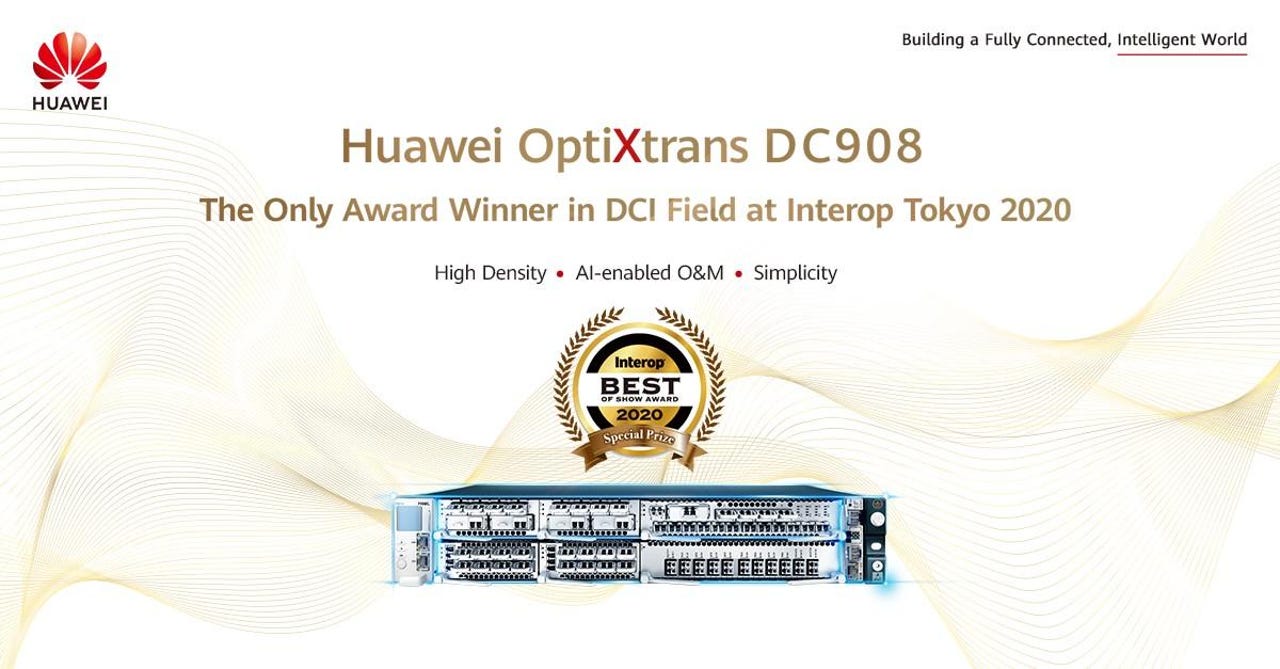Boosting Business with Your Own DCI
In the digital era where technologies are advancing beyond imagination, data centres are operating differently, particularly as cloud computing drives change in the whole ICT landscape. Further complicated by the recent COVID-19 pandemic, enterprises have had to react quickly to allow people to gain remote access and work from home.
As digital transformations proceed, many large enterprises will need to run numerous data centres -- where there is a huge amount of data flow -- due to the non-stopping trends of 5G, artificial intelligence (AI), Internet of Things, among other technologies. Some researchers have forecast that by 2025, the number of global data centres will increase by about four times and annual traffic will jump 48%.
The pandemic has simply accelerated this process, with figures indicating that web users have spent around 20% more time on the internet during this period. Most content, ranging from live broadcasts, videos, games, medical services, to online teaching, banking, and remote office, has driven a surge in data traffic, putting a lot of pressure on data centres.
DCI eases pressure from data centres
These enterprises will need to embrace web-scale networks to connect their data facilities with the best cost structure and efficiency. Such networks will need good data centre interconnect (DCI) solutions to fully utilise flexible and innovative cloud computing and service models to improve user experience. DCI has therefore become the core infrastructure in the cloud computing era.
IDC Research Director Rajesh Ghai believes DCI has assumed strategic importance for large enterprises. "It is actually becoming important enough for them to consider controlling it by building a self-built DCI," says the expert.
The control over DCI is what goes missing in the lease model. Given the sensitivity and security of data, as well as the importance of reliable connectivity and return of investment, enterprises are finding self-built DCI to be much better for their operations in the long run because it provides a full control of systems.
"If you are going to control something, you are going to own it. You can control the operating cost of the technology," said Ghai, who expects more enterprises will want to build their own DCIs for better business performance.
Self-built DCI allows better control and quality
In terms of initial investments, costs to create a self-built DCI can range between three to five months of leasing fees of private lines, but the quality will be well under control to fit the actual business needs of enterprises.
Industry experts predict that four vertical industries, namely, the hyper-scale over-the-top media services, large internet services providers, large banks and financial institutions, and governments will be actively building self-built DCIs. This is evident amid the COVID-19 pandemic, where more people are working from home, which has created a tremendous data traffic boost for entertainment, work, financial management, as well as public services over the last couple months.
When enterprises make the decision of whether to build their own DCI, there are several major criteria they should consider.
1. Bandwidth: The vast amount of data transfer not only requires huge but also scalable -- both up and down -- bandwidth to support flexible operations. Equinix released its Global Interconnection Index, which predicts that the DCI bandwidth capacity is expected to reach 13,300 Tbit/s in 2022, with a compound annual growth rate of 51%. This reflects the higher demand for interconnection bandwidths, which is driven by governments, finance, telecom, and more industries.
2. Security: As data is the key asset with tremendous value, it must be handled with extreme care to ensure user experience and confidence;
3. Cost-effectiveness: DCI should be able to boost efficiency with its built-to-fit property and flexibility in structure.
4. Stability: Building your own DCI can ensure the system is stable and well monitored, especially when AI is actively applied.
There are successful cases with self-built DCI across the globe. In Thailand, for instance, the National Interbank Transaction Management and Exchange has been using Huawei's DC OptiX solutions to predict gradual failures and build its own DCI networks. This brilliant tech scheme has helped redefine its network architecture, where security and reliability are taken care of. Among the key benefits are low latency, reliable network protection, and good connectivity.
Huawei's DCI technology has also become a key component in the success of Chinese online giant Baidu and has enabled the company to scale up its services effortlessly when required.

Huawei OptiXtrans DC908 wins recognition in Tokyo
Huawei's OptiXtrans DC908 is the star in this scheme, supporting Super C+L technology, 220 wavelength@50GHz, with simplified operation and maintenance, plus smart fault location capability. It provides up to 88 Tbit/s capacity per fibre and 6.4 Tbit/s per rack unit. The product also features high density, an optical-electrical integrated design, and AI-ready O&M. Using DC908, technical personnel can deploy the connection in just eight minutes, without requiring dedicated personnel. It also maximises the value of optical fibre and minimises the per-bit cost for enterprise customers.
The equipment has recently been recognised by Japan's largest ICT exhibition with the Best of Show Award. Thanks to its high density, Intelligent O&M, and simplicity, Interop Tokyo picked the item as the only DCI product to win. the approval of the expert judging panel.
In fact, leading market researcher Omida has recently reported that Huawei had the largest market share across the three regions excluding North America among global DCI manufacturers. The report also found that Huawei DC OptiX products ranked top globally in both the carrier and government DCI market segments for 2019.
The tech giant has vowed to boost its strategic investment and R&D innovation in the optical field to create greater value for customers across the globe and help them achieve business success.
Self-built DCI allows better control and quality and empowers the digital transformation for various vertical industries. Huawei's OptiXtrans DC908 is the star in this scheme, recognised for its quality and market momentum.
Click here to know more about the Interop Tokyo 2020.